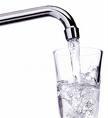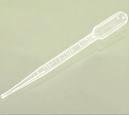INTRODUCTION:
Nowadys, indicators have become technologically advanced and can be used for the main purpose of indicating whether something is acidic, basic or neutral. This is possible because in solutions of different pH, the colour of the inidcator will change simultaneously with pH change. This is made possible by pigments in the indicators. Hand made indicators include universal indicator, methyl orange, phenolphthalein and many more.
Acids and bases are diverse in this world. They are everywhere ranging from foods to trees to rocks and many more. Indicators can be used to determine whether these substances are acidic, basic or neutral.
Manufactured indicators are one type and the second type is natural indicators. Believe it or not, the majority of fruits, vegetables and flowers contain pigments which may be used as acid-base indicators. For example, Red cabbage contains within its leaves a red pigment called anthocyanin. This is present in many other vegetables such as capsicum, carrot, tulips and many more.
This anthocyanin has the ability to change colour in a variety of pH due to certain chemical reactions that take place involving H+ and OH- ions. Read on to discover the chemistry involved in these reactions.
Anthocyanins are complex molecules that have the ability to add and/or subtract hydroxide (OH-) ions. When anthocyanin is added to acidic solutions, hydroxide (OH-) ions will leave the anthocyanin molecule. On the other hand, when anthocyanin is added to basic solutions, the OH- ions from the water will attach themselves to the anthocyanin molecule.Therefore, anthocyanin is general name given to a series of similar compounds each with a different number of OH- ions attached. Anthocyanin is an indicator for the reason that each form of the compound reacts with light differently so that each form is a different colour�
Anthocyanin can be extracted from natural plants and vegetables in many ways. A very common way of extracting anthocyanin form plants is to place the plant in low boiling point alcohols which have been acidified with HCl and boiling for a while.�
There are other methods of extracting anthocyanin from vegetables. One very common method is boiling the vegetable in distilled water and waiting till boiling starts. The water reacts with the anthocyanin pigment which allows wxperimenters to use this water as the indicator.
Anthocyanin presents many vegetables such as beets, berries, cherries, fiji apples, eggplant, grapes etc with the red-purplish colour.
Anthocyanin gives colour to plants for a reason. This colour of plants and flowers helps attract pollinating animals to the flowers and aslo animals which help in seed dispersal.�
AIM:
To perform a first hand investigation to prepare and test at least two natural inidcators
To identify the colour of these indicators in acidic, basic and neutral conditions
To use the natural indicators to classify at least five household substances as acidic, neutral or basic
MATERIALS:
MATERIALS | QUANTITY |
7 | |
1 | |
1 | |
1 | |
1 | |
1 | |
1 | |
100 mL | |
Tulip | Minimum 15 |
1 | |
2 (1 pair) | |
1 | |
75 mL | |
75 mL | |
150 mL | |
MATERIALS | QUANTITY |
1 | |
acid | 100 mL |
Hydroxide | 100 mL |
50 mL | |
Detergent | 50 mL |
50 mL | |
50 mL | |
1 | |
1 | |
Lab coat | 1 |
Knife | 1 |
Peeler | 1 |
HYPOTHESIS:
Based on previous knowledge and personal predictions, the following results are expected.
Eggplant | Radish | |
Acidic | ||
Neutral | Remains purple | Remains pink |
Basic | Purple Dark green | Pink |
TABLE B2: COLOUR CHANGE OF TWO COMMON INDICATORS
Bromothymol blue | Universal indicator | |
Acidic | ||
Neutral | ||
Basic |
TABLE C: Trial 1 (CLASSIFYING HOUSEHOLD SUBSTANCES)
ACIDIC | NEUTRAL | BASIC | |
Laundry detergent | |||
Window cleaner | |||
Caustic soda | |||
Vinegar | |||
Borax | |||
Control (distilled water) |
TABLE C: Trial 2 (CLASSIFYING HOUSEHOLD SUBSTANCES)
ACIDIC | NEUTRAL | BASIC | |
Laundry detergent | |||
Window cleaner | |||
Caustic soda | |||
Vinegar | |||
Borax | |||
Control (distilled water) |
TABLE C: The experiment (CLASSIFYING HOUSEHOLD SUBSTANCES)
ACIDIC | NEUTRAL | BASIC | |
Laundry detergent | |||
Window cleaner | |||
Caustic soda | |||
Vinegar | |||
Borax | |||
Control (distilled water) |
RISK ASSESSMENT:
SUBSTANCE | RISK | SAFETY TECHNIQUE |
Vinegar | When vinegar comes into contact with skin it can cause irritation and itching | Wear gloves to prevent the vinegar from touching the skin |
Glass beakers | If glass beakers are dropped, they might break and experimenter might get cut. | Wear a long sleeve lab coat and gloves just as a precaution and preparation for worst case scenario. Also, handle carefully |
Hot materials | After the water is boiled in the beaker, the beaker would be really hot | Wear gloves to prevent burns. Handle carefully |
Knife | When cutting with a knife, hand may slip and knife will scar the experimenter | Wear glove to prevent an accidental cut |
Spills | The hot water, detergent and cleaner might spill causing a slippery surface | Wear lab approved closed shoes to prevent from slipping and hurting yourself |
Window cleaners | An accidental spray might result in it entering the eyes | Safety glasses must be worn to prevent entry of these cleaners |
Laundry detergent | Laundry detergent might spill and trigger a slippery surface | Wear lab approved closed shoes to prevent from slipping and hurting yourself |
Hydrochloric acid | Hydrochloric acid causes burn and irritation when in contact with skin | Long sleeved lab coat and gloves must be worn |
Bunsen flame | The bunsen flame is really hot and a mishap would be severe | Turn the bunsen nozzle until the safety blue flame appears |
Indicators | Indicators are very toxic and might be accidentally inhaled | Be really careful where you place the indicators and handle with care |
All chemicals | If inhaled can cause serious intestinal pains and damage� | Keep all chemicals away from children |
PROCEDURE:
PART A:
Gather the two natural substances to be used as the indicators.
Prepare the samples the way you like whether it be dicing into small pieces, or squeezing for the juice etc.
Fill a beaker with 150 mL of distilled water or demineralized water
Prepare the bunsen burner by connecting it to the gas port
Turn the gas on and use a match to light up the beaker. (Note: Make sure the flame is the safety flame which is of blue colour.)
Place the samples of the first natural substance into the beaker carefully
Allow the water with the natural substance to boil for approximately 5 -10 minutes
Once the gas supply has been shut off from the beaker, allow the water with the natural substance to cool for minimum 5 minutes
Repeat steps 5-8 but this time using the second of the natural substances
PART B:
Prepare three solutions, one acidi, the second being basic and the third being neutral.
Place 15 mL of each solution into each of three beakers.
Place some masking tape on each beaker and label with a marker each beaker as containing the acidic, basic or neutral solution.
Use a pipette to gather 10 mL of the natural substance solution from part A and place into one of the labelled beakers.
Repeat step 4 for the remaining two solutions
Observe the colour change of the indicator in each of acidic, basic and neutral conditions.
Record all results and observations
PART C:
Gather the five household substances that you would be classifying.
Gather 6 beaker ( the extra beaker would be used for the control).
Place 20 mL of each of the household substances into each of the five test tubes.
Pour 20 mL of demineralized water into the remaining beaker as the control
Collect 20 mL of the first natural substance solution from part A and add to one of the household substances
Repeat step 5 but this time for the remaining 4 household substances and the control
Repeat steps 5-6 with the solution of the second natural substance
CONTROLLED VARIABLE: The control is the beaker with the distilled water
DIAGRAM:
Radish extract solution Eggplant extract solution
BEAKERS
RESULTS:
TABLE B1: COLOUR CHANGE OF TWO NATURAL INDICATORS
Eggplant | Radish | |
Acidic | Purple | Pink |
Neutral | Purple | Pink |
Basic | Purple | Pink |
TABLE B2: COLOUR CHANGE OF TWO COMMON INDICATORS
Bromothymol blue | Universal indicator | |
Acidic | ||
Neutral | ||
Basic |
TABLE C: Trial 1 (CLASSIFYING HOUSEHOLD SUBSTANCES)
ACIDIC | NEUTRAL | BASIC | |
Laundry detergent | |||
Window cleaner | |||
Caustic soda | |||
Vinegar | |||
Borax | |||
Control (distilled water) |
TABLE C: Trial 2 (CLASSIFYING HOUSEHOLD SUBSTANCES)
ACIDIC | NEUTRAL | BASIC | |
Laundry detergent | |||
Window cleaner | |||
Caustic soda | |||
Vinegar | |||
Borax | |||
Control (distilled water) |
TABLE C: The experiment (CLASSIFYING HOUSEHOLD SUBSTANCES)
ACIDIC | NEUTRAL | BASIC | |
Laundry detergent | |||
Window cleaner | |||
Caustic soda | |||
Vinegar | |||
Borax | |||
Control (distilled water) |
COLOUR CHANGE OF TWO NATURAL INDICATORS
COLOUR CHANGE OF TWO NATURAL INDICATORS
� EMBED PBrush ���
CAUSTIC
SODA
LAUNDRY DETERGENT
WINDOW CLEANER
BORAX
VINEGAR
CONTROL
(DISTILLED WATER)
� http://www.madsci.org/posts/archives/1998-03/890795428.Ch.r.html
� � HYPERLINK "http://books.google.com.au/books?id=K8urEPJvXNsC&pg=PA503&lpg=PA503&dq=extracting+anthocyanin&source=web&ots=WqleAzLSf8&sig=KXvxGY-Fxfso6TpIGoA4uKvs3Bo&hl=en" ��http://books.google.com.au/books?id=K8urEPJvXNsC&pg=PA503&lpg=PA503&dq=extracting+anthocyanin&source=web&ots=WqleAzLSf8&sig=KXvxGY-Fxfso6TpIGoA4uKvs3Bo&hl=en�
� http://www.madsci.org/posts/archives/2001-11/1006647185.Bt.r.html
� http://www.greenfootsteps.com/vinegar-and-bleach.html





